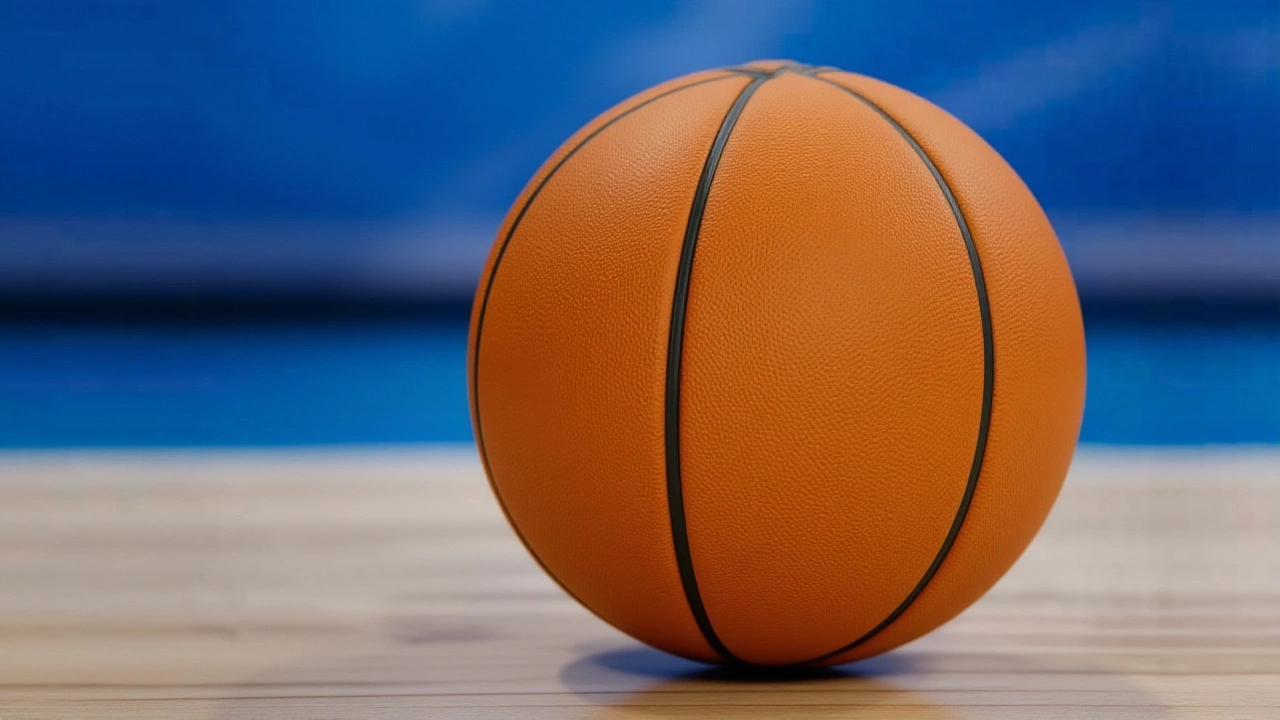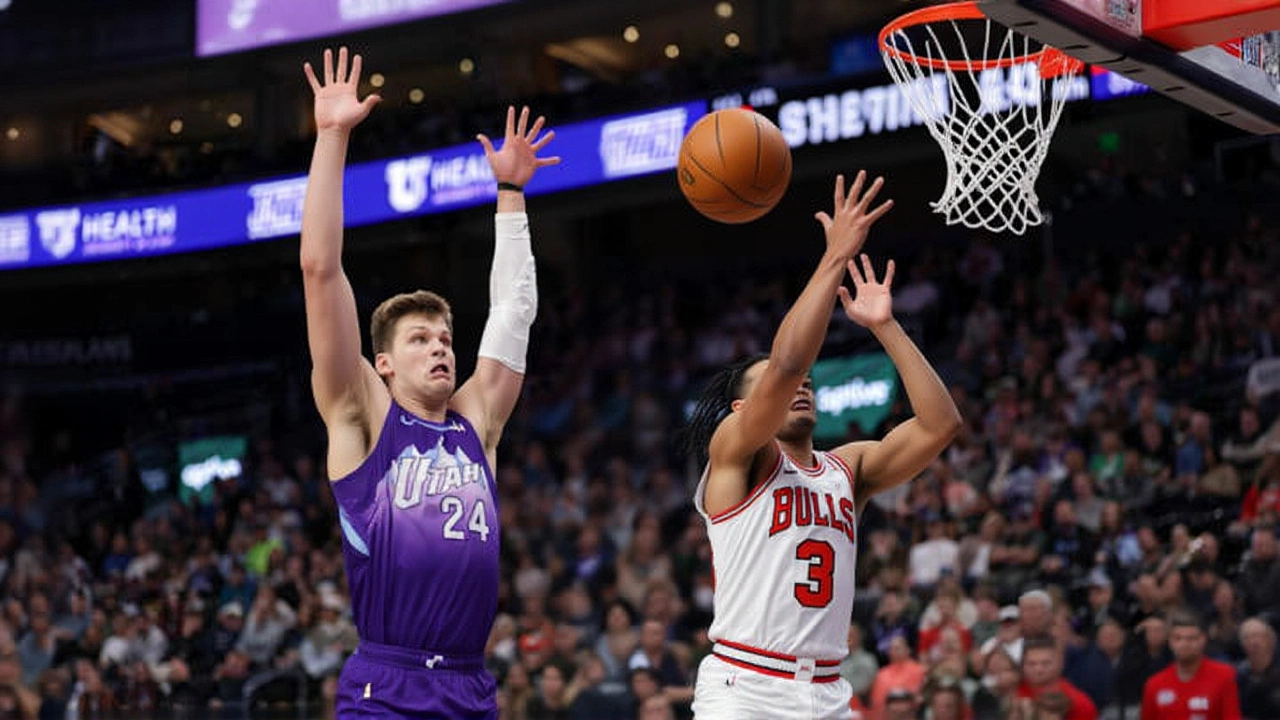When Walker Kessler cracked ESPN’s NBA Rank 2025 at #98, few saw it coming. Last year, he wasn’t on the list at all. Now, the 23-year-old center for the Utah Jazz — a team that hasn’t made the playoffs since 2022 — is being viewed as a cornerstone of their rebuild. The jump isn’t just a fluke. It’s a signal. And it’s rooted in something more than stats: it’s about potential, durability, and the quiet dominance of a player who doesn’t need the ball to change games.
From Invisible to Indispensable
Kessler’s 2024-2025 season was a masterclass in efficiency masked by low volume. He played 58 games — a career high — and averaged 11.1 points, 12.2 rebounds, and 1.7 assists. But the real story was in the blocks: 2.3 per game. That made him the first player since Tim Duncan (1997–2000) to average over two blocks per season in each of his first three NBA campaigns. Think about that. Duncan was a Hall of Famer. Kessler? A 22nd pick who was traded before his rookie season even began. His presence altered the entire defensive architecture of the Utah Jazz. When he was on the floor, opponents shot 4.7% worse at the rim. When he was off? Chaos. The Jazz went 2-5 in their final seven games after Kessler suffered a knee injury in early 2025. The drop-off wasn’t subtle. It was seismic.The Markkanen-Filipowski Magic
Here’s the twist no one expected: when Kessler was sidelined, Lauri Markkanen and rookie Kyle Filipowski formed an unexpected duo. In 127 minutes together, they posted a +16.4 net rating. That’s elite. For context, Markkanen’s net rating with veteran Jusuf Nurkic was a brutal -11.9. The Jazz front office noticed. They didn’t panic. They didn’t rush to trade Kessler. Instead, they doubled down. Why? Because Markkanen-Filipowski worked *because* Kessler had cleared space. His rim protection forced offenses to the perimeter. When he was gone, the Jazz had to adjust — and they found chemistry. But that chemistry was a product of his absence, not a replacement for him.Why the Jazz Won’t Trade Him
Trade rumors swirled in June 2025 after Lakers Nation reported the Los Angeles Lakers were interested. But analysts like Trevor Lane and Ron Gutterman quickly shot it down. Why? Kessler has two years left on a $96.4 million contract. The Lakers? They’re maxed out, aging, and short on draft capital. Even if they wanted him, they couldn’t afford him — not without gutting their core. The Utah Jazz, headquartered at Vivint Arena in Salt Lake City, have a different philosophy. They’re not trying to win now. They’re trying to build something sustainable. Kessler is the perfect piece: young, cheap (relative to his impact), and defensively elite. He doesn’t need to be a scorer. He just needs to be *there*.
What ESPN Saw That Others Missed
ESPN’s ranking system doesn’t just look at last season. It projects forward. And for Kessler, the projections are wild: 15.8 points, 3.9 rebounds, and 4.4 assists per game in 2025-2026. That’s not a typo. Those are fantasy basketball numbers — and they’re based on feedback from GMs, coaches, and analytics teams. It suggests the league believes Kessler is on the verge of unlocking an offensive game. He’s been working on his mid-range pull-up, his post footwork, and his passing out of double teams, according to Sports Illustrated’s Jared Koch in October 2025. He’s not just getting stronger. He’s getting smarter.The Bigger Picture
Kessler’s rise isn’t just about him. It’s about how the NBA is evolving. Centers who can protect the rim, switch on screens, and space the floor are the new currency. Kessler already does two of those. If he adds the third — consistent offensive production — he becomes a top-50 player. Maybe sooner. The Jazz aren’t just holding onto him. They’re betting on him. And the league is starting to bet with them.
What’s Next?
The 2025-2026 season will be Kessler’s true test. Can he stay healthy? Can he handle the increased offensive load? Can he carry the Jazz into playoff contention? The answers will come on the court. But for now, the message is clear: Walker Kessler isn’t just part of Utah’s future. He might be the reason it has one.Frequently Asked Questions
Why is Walker Kessler ranked so low at #98 if he’s so important?
ESPN’s rankings weigh volume and star power heavily, and Kessler plays on a non-contender with limited offensive touches. His value is in defense and efficiency, not flashy stats. #98 reflects his role, not his impact — many executives believe he’s undervalued by the ranking system. His projected offensive leap could push him into the top 50 next year.
How does Kessler compare to other young centers in the NBA?
Kessler’s three-year block average (2.3+) is unmatched among active centers under 25. Only Nikola Jokić and Rudy Gobert have matched his defensive consistency over that span. But unlike Jokić, Kessler hasn’t yet become a playmaker. Unlike Gobert, he’s more mobile and shows offensive upside. He’s a hybrid — not quite a superstar, but more than a role player.
Could the Lakers still trade for him?
Technically yes, but it’s unlikely. Kessler’s $96.4 million contract over two years makes him a tough fit for most teams, especially ones like the Lakers, who are already over the cap and need cap flexibility. Utah would demand multiple first-round picks and young talent — assets L.A. doesn’t have after trading for Anthony Davis and re-signing LeBron James.
What’s the significance of the Markkanen-Filipowski lineup?
That duo’s +16.4 net rating proved the Jazz can thrive without Kessler — but only because his presence earlier in the season forced opponents to adjust. It’s not that they’re better without him; it’s that they learned how to play *with* him. The numbers suggest Kessler’s defense creates space for others to shine, making him the invisible engine of their offense.
Is Kessler’s contract a liability?
At face value, yes — $48 million per year for a non-star center looks bloated. But if he becomes a 15-point, 12-rebound, 3-block player with improved spacing, that contract becomes one of the best values in the league. The Jazz aren’t paying for stats. They’re paying for elite defensive anchor potential — and right now, that’s rarer than a 30-point scorer.
What does Kessler’s rise mean for the Jazz’s rebuild?
It means they’ve found their foundation. The Jazz have been rebuilding for years, but Kessler gives them a rare, non-negotiable asset: a young, contract-controlled, elite defender who can anchor a system. With Markkanen as their scorer and Filipowski developing, Kessler is the glue. He’s the reason they can afford to be patient — because they know they have something special.
